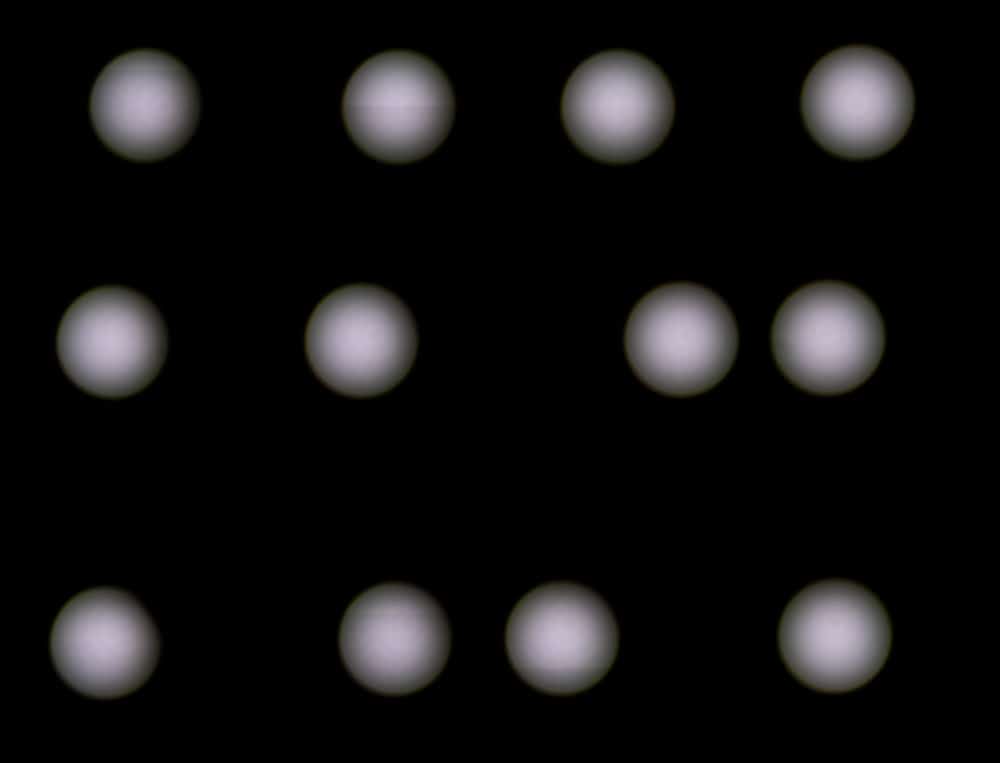Earlier, I reported on the great news that the Sony 135 STF (apodized) A-mount lens covers the GFX sensor with zero vignetting. Yesterday I examined sharpness, both on and off axis, using a slanted edge and a Siemens Star for a target, and found the lens quite sharp on axis, and soft in the corners.
There are two pieces to bokeh. The first is what things look like when they are well out of focus (OOF), and the second is how the transition from OOF to in-focus happens. The second is complicated, but the first is simple. What you see when part of the image is well OOF is each point in the image times the OOF point spread function (PSF, in this case, aka bokeh balls). So you can understand what the bokeh in the OOF regions is gonna look like by looking at the OOF PSF across the frame. After you’ve looked at a few of these images that I’m going to show you here, you can see how the deep-OOF bokeh of just about any lens is going to look like with just about any scene.
The technique that I used to obtain the images below is explained here. I used a GFX 50R for the captures.
I’ll just show you the lower left quadrant, since the PSFs are rotationally symmetric. The center of the uncropped image is at the upper right corner of the image below.
This looks great. There is a tiny bit of asymmetry to the PSF’s in the side and corner, but certainly not what you would call cat’s eye.

Leave a Reply